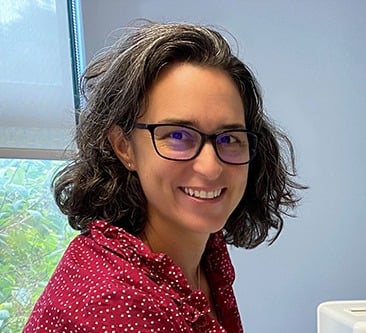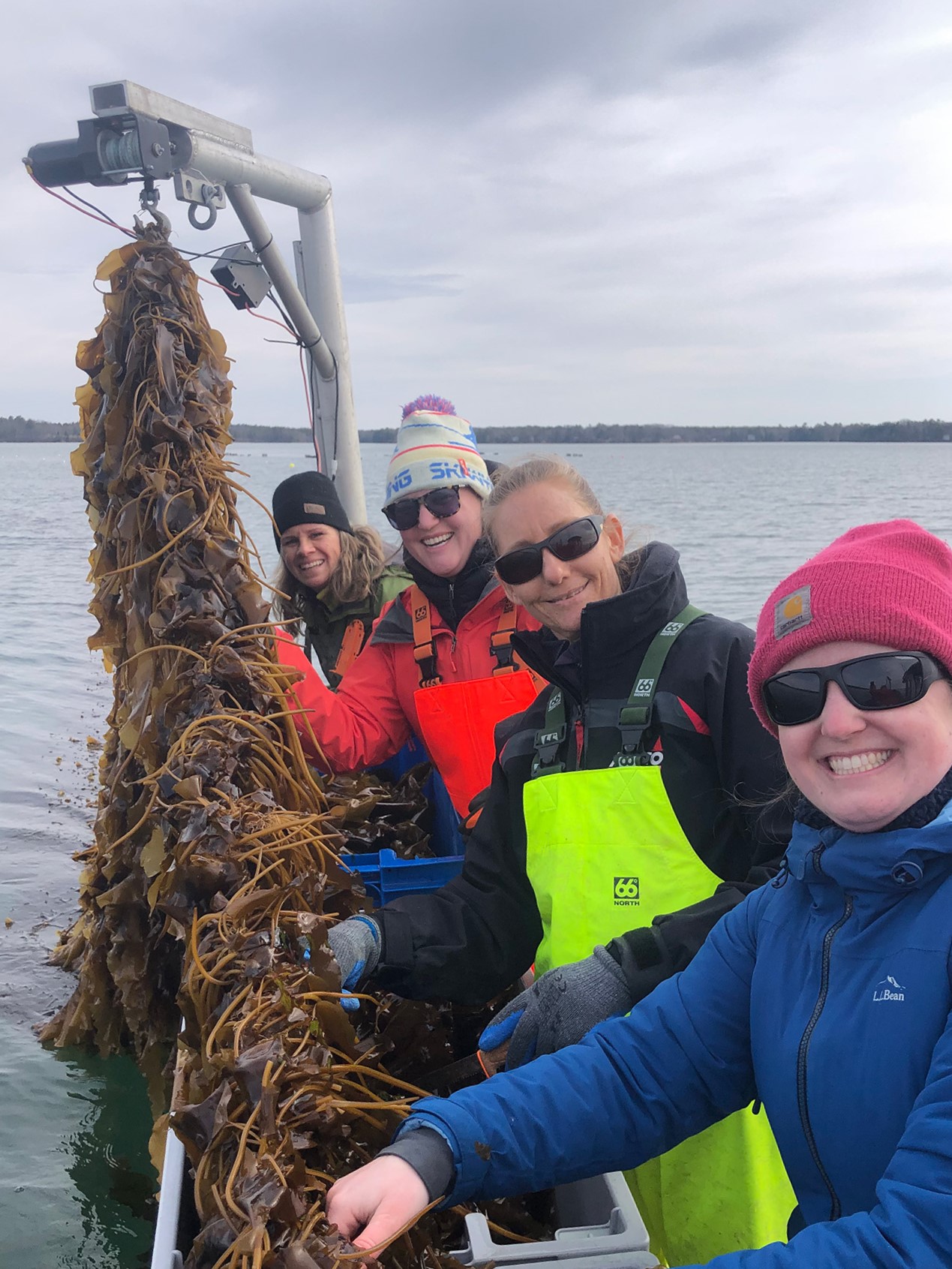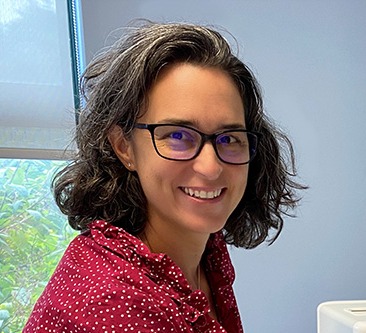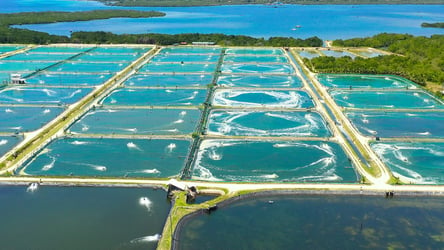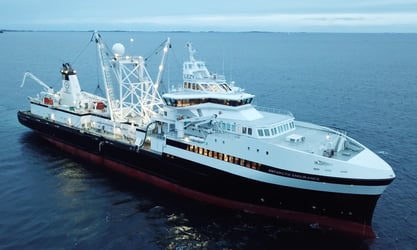From nutritional supplements to biopolymer materials to epicurean delicacies, kelp is growing in popularity and finding its place in Maine's evolving aquaculture ecosystem. Ahead of Maine's 5th annual Seaweed Week (April 21- April 30th), we are happy to share about our recent tour of a local kelp farm with Captain Ken Sparta and his crew of innovative aquaculturists for one of the first harvests of the season. On our early morning cruise out of the glass-calm Harraseeket River in Freeport, Maine, we breathed in the fresh salty air and envied the seafarers’ commute to their “office.”
Pictured above, left to right: Stina Isfeld, Latitude 43 Farms; Katie Weiler, founder of Viable Gear; Karina Hines, Botanical Kitchens; Savannah Judge, Yokogawa Fluid Imaging Technologies.
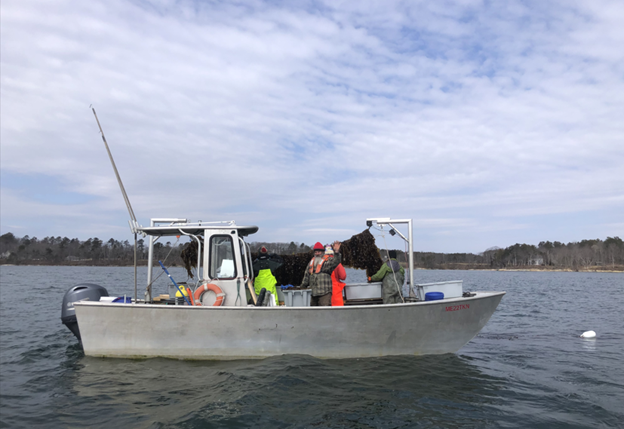 Towing up line after line, we listened to stories of how kelp farming is fitting into traditional working waterfronts and being impacted by the changing climate. We heard about the struggles of a developing industry while lively quips and wisecracks from the mostly-female crew of marine entrepreneurs kept us entertained. Eager to dive in, we joined the cooperative team and separated blades, stipes, and holdfasts before carefully placing each part of the kelp into its respective collection bin.
Towing up line after line, we listened to stories of how kelp farming is fitting into traditional working waterfronts and being impacted by the changing climate. We heard about the struggles of a developing industry while lively quips and wisecracks from the mostly-female crew of marine entrepreneurs kept us entertained. Eager to dive in, we joined the cooperative team and separated blades, stipes, and holdfasts before carefully placing each part of the kelp into its respective collection bin.
Ken is the owner of the Freeport Oyster Bar and has been farming oysters, scallops, and kelp in Casco Bay for many years. His company, Spartan Sea Farms, is dedicated to sustainable farming methods that ensure the freshest-tasting products for his customers.
Pictured above: Ken Sparta aboard his kelp harvesting vessel, Gorgo
Every part of the kelp is used. “Most of what we [grow] goes to wholesale buyers,” said Sparta. The long, wavy kelp blades are sold and used for salads and soups. The stipes (stems) are pickled for charcuterie boards to replace more traditional olives, and the holdfasts—which allow the kelp to attach to a rope for growing—are pickled for a cocktail served at Freeport Oyster Bar called Old Man & the Sea.
Like any farm, sowing an ocean farm is a practice that requires dedication and hard work, but also relies on Mother Nature and many unseen and microscopic factors – the latter of which FlowCam can help us visualize.
While shipboard harvest activity was well underway, we collected a water sample using a 20 µm plankton net that we towed across the kelp line. Plankton nets can concentrate the plankton in a water sample, which comes in handy when primary production is relatively low, and phytoplankton are less abundant.
Using FlowCam 8400 with Autoimage Mode at various magnifications, here are some examples of what we saw.

The microplankton community was dominated by diatoms (viewed at 10X magnification above), which is typical of early spring in the Gulf of Maine. We also noted three different species of Tripos (formerly Ceratium) at 4X magnification:

While vastly different in size, phytoplankton and kelp both produce energy from the sun through photosynthesis. They both utilize nitrogen and carbon cycling pathways that affect seawater chemistry. Kelp enhances the productivity of distinct microbial communities with higher taxonomic and phylogenetic diversity1, thereby enriching the ecosystem with biogeochemical nutrient cycling critical to creating a highly productive ecosystem2.
FlowCam gives us a clear insight into the abundance and diversity of microalgal organisms living in nearshore macroalgal habitats and can help us understand the interplay among phototrophs in the water column.
Thank you, Ken Sparta and crew, for sharing your time and stories with us out on Casco Bay!
References
1. Pfister CA, Altabet MA, Weigel BL. Kelp beds and their local effects on seawater chemistry, productivity, and microbial communities. Ecology. 2019;100;10. https://doi.org/10.1002/ecy.2798
2. Jiang Z, Liu J, Li S, et al. Kelp cultivation effectively improves water quality and regulates phytoplankton community in a turbid, highly eutrophic bay. Science of the Total Environment. 2020;707. https://doi.org/10.1016/j.scitotenv.2019.135561







